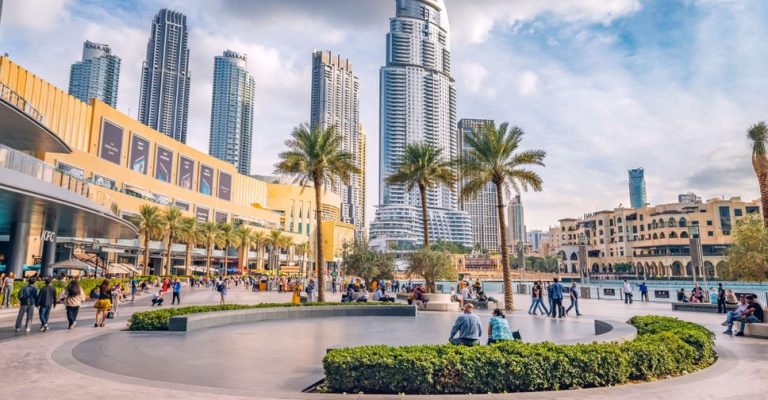As retail continues to evolve worldwide, the presence of shopping malls per capita has become a powerful indicator of a country’s consumer culture, urbanization, and commercial investment. While countries like the United States and China dominate in total mall numbers, the per capita metric reveals a more fascinating story—some smaller nations are far more mall-dense than their larger counterparts.
In this article, we explore the countries with the highest number of malls per 1 million people, examining what drives their retail saturation and what it says about lifestyle and shopping habits in each region.
Why Per Capita Matters in Mall Metrics
Looking at malls per capita gives us a more accurate reflection of accessibility and retail importance to everyday life. A smaller country with fewer malls can outperform a superpower in this ranking if retail centers are more concentrated per population.
This metric often points to:
- High urban density and modern infrastructure
- Middle-class growth and consumerism
- Tourism influence
- Government incentives for commercial development
Top 10 Countries with the Most Shopping Malls Per Capita (2025)
Here’s an updated ranking of the top countries based on the estimated number of shopping malls per one million people as of 2025:
| Rank | Country | Malls per Million People | Notable Cities |
|---|---|---|---|
| 1 | United Arab Emirates | 30+ | Dubai, Abu Dhabi |
| 2 | Singapore | 28 | Orchard Road, Marina Bay |
| 3 | Qatar | 26 | Doha |
| 4 | Kuwait | 22 | Kuwait City |
| 5 | United States | 20 | Los Angeles, Houston, Miami |
| 6 | Bahrain | 19 | Manama |
| 7 | South Korea | 17 | Seoul, Busan |
| 8 | Malaysia | 15 | Kuala Lumpur, Johor Bahru |
| 9 | Thailand | 14 | Bangkok, Chiang Mai |
| 10 | Canada | 12 | Toronto, Vancouver, Montreal |
1. United Arab Emirates (UAE): The Global Mall Capital
With over 30 malls per million people, the UAE—especially Dubai—has become the undisputed mall capital of the world. Malls like Dubai Mall and Mall of the Emirates are not just shopping hubs—they’re entertainment cities.
Why so many malls?
- Tax-free retail environment
- Extreme heat drives indoor shopping
- Tourism-centered economy
2. Singapore: Shopping at Every Turn
Despite its compact size, Singapore boasts 28 malls per million people. Iconic zones like Orchard Road and Marina Bay Sands are lined with high-end retailers, department stores, and boutique malls.
Driving factors:
- High GDP per capita
- Strategic position as an Asian commerce hub
- Strong brand presence and luxury retail culture
3. Qatar: Small Country, Huge Retail Ambitions
Qatar’s retail sector continues to flourish with 26 malls per million. The country’s oil wealth and expatriate-heavy population fuel luxury and everyday retail expansion.
Key malls: Villaggio Mall, Doha Festival City
4. Kuwait: Oil Wealth Fuels Consumerism
Kuwait’s 22 malls per million illustrate its population’s high spending power and retail appetite. Malls are central to social life, with entertainment zones, cinemas, and cafés making them family-friendly spaces.
5. United States: The Originator of Mall Culture
The U.S. remains among the top in absolute mall numbers but also scores high per capita with 20 malls per million. Though many traditional malls are closing, lifestyle centers and outlet malls are on the rise.
Hotspots: Mall of America, King of Prussia, and Westfield chain malls
6. Bahrain: Boutique Shopping Meets High Density
Tiny but wealthy Bahrain has a robust mall infrastructure with 19 malls per million. Its mix of traditional souks and modern retail centers appeals to both locals and tourists from neighboring Gulf countries.
7. South Korea: Retail & Pop Culture Fusion
South Korea combines shopping, culture, and entertainment, particularly in cities like Seoul, where department stores and underground malls thrive. The country records 17 malls per million, focusing heavily on tech-integrated shopping.
Trend: Many malls include K-pop merchandise stores and high-tech food courts.
8. Malaysia: Malls as a Social Hub
With 15 malls per million, Malaysia’s capital Kuala Lumpur boasts shopping giants like Pavilion KL and Mid Valley Megamall. These act as social gathering points, with restaurants, fitness centers, and multiplexes.
9. Thailand: Tourism Drives Retail
Thailand’s 14 malls per million are largely fueled by tourism. Bangkok alone has dozens of massive malls—ICONSIAM, CentralWorld, and Siam Paragon—which cater to both tourists and locals.
10. Canada: Cold Weather, Warm Malls
Canada’s long winters make malls vital spaces for public gathering, especially in major cities. With 12 malls per million, shopping centers double as cultural, social, and business venues.
What About China and India?
While China and India have thousands of malls, their large populations significantly lower their per capita scores. However, they lead in total square footage and mall development projects.
Key Takeaways
- Middle Eastern countries lead due to wealth, climate, and tourism.
- Asian countries combine innovation, urban density, and cultural experiences to enhance mall life.
- Western nations like the U.S. and Canada continue to adapt their mall models to changing shopping behavior.
Why Mall Density Still Matters in 2025
In the age of e-commerce, physical malls remain essential for:
- Experiential shopping
- Community interaction
- Luxury brand presence
- Tourism and entertainment revenue
Retailers are now blending physical and digital features—AR fitting rooms, smart carts, and loyalty app integration—to meet evolving consumer expectations.
Final Thoughts
Understanding which countries have the most shopping malls per capita provides insights into retail investment patterns, consumer behavior, and national priorities. As shopping habits change, expect more smaller, tech-enhanced, lifestyle-driven malls to appear, especially in countries aiming to balance urban convenience and premium retail.

